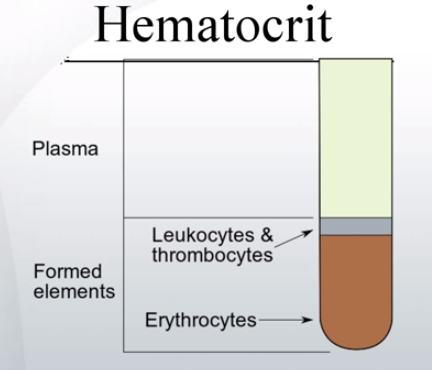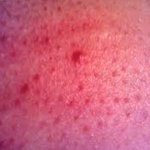Hematocrit helps to understand the approximate number of RBCs(red blood cells) in the bloodstream. The high and low levels of hematocrit gives an idea about the volume of red blood cells in the blood. Also, it helps to know the space occupied by the RBCs in a given volume of blood. The measurements of hematocrit value are always read in percentage.For e.g. if an adult man has hematocrit value as forty six per cent, it means that a 100 ml sample of blood has 46ml of red blood cells. We know that blood is generally made up of plasma, WBCs (white blood cells) and RBCs. The WBCs and RBCs circulate in the body through the bloodstream and remain floating in blood. It is usually said that hematocrit measure is directly proportional to the RBCs count. Thus, a low measurement of hematocrit value shows a decrease in the RBCs count.
Hematocrit tests are important. The total volume of blood is composed of fifty five percent of plasma, glucose and some dissolved proteins. Therefore, if there is any rise or fall in the percentage of RBCs in relation to the volume of plasma, it indicates the presence of a number of health problems. This can be determined through a hematocrit test.

Hematocrit levels – Normal range in women, men and children
The hematocrit value for males and females is not similar, but quite different. The tests of hematocrit will give different values as per the gender of the person. The age of the person also influences the reading of the hematocrit value, i.e. a child’s reading will differ from the reading of an adult.
-
Hematocrit normal range in adults:
- In case of males the range of hematocrit value is between 42 to 52 percent
- In females, the range of measurement is from 37 to 47 percent
- Still, the ranges given above may vary a little bit, depending upon the equipment and standards used for the test in different laboratories. For example, in some laboratories the hematocrit value for males is between 40.7 to 50.3% whereas for females the range is between 36.1 to 44.3%.
-
Hematocrit levels in children:
- In a baby that is only some days old, the hematocrit value may range between forty-two to sixty-five percent.
- A two months old baby will show a hematocrit value ranging between twenty-eight to fifty-five percent.
- In case of 3 months old baby, the hematocrit measurement range would be from thirty to thirty-six percent.
- If the child is between 6 to 12 years then the hematocrit value ranges between 35% to 46%
- A child who is 10 years old would show the hematocrit measure ranging from thirty-six percent to forty percent.
- A twelve year old boy, in good physical shape, but who is not more than eighteen years, will elicit a hematocrit value ranging between 36% to 49%
- A female of twelve to eighteen years and having good health will show a range of hematocrit measure from thirty-six to forty-six percent.
- The hematocrit values of persons change from time to time as per the age. However, it will never be more than seventy percent.
High levels of hematocrit
If high level of hematocrit value is present in the blood for a very long time, it is an indication of several health problems. Some causes of high hematocrit values are as follows:
- Diarrhea results in loss of body fluids because of removal of watery stools; this in turn causes severe dehydration resulting in high hematocrit values.
- Intake of anabolic steroids and blood disorders can also be a cause for increase in hematocrit value.
- The level of fluids in the body is also lessened because of dehydration. This gradually results in the depletion of the plasma level in the blood, which further leads to high hematocrit value. Consumption of plenty of fluids can help to solve this issue.
- Lung problems can lead to decrease in the flow of oxygen to other parts of the body; this causes the kidneys to increase the production of red blood cells. Gradually, this in turn will result in high hematocrit value.
- Severe injuries and burns can cause excess loss of blood which results in depletion of the level of the plasma in the blood. This eventually raises the level of hematocrit.
Low hematocrit causes
- Renal failure affects the functioning of the kidneys which in turn decreases the production of red blood cells, leading to a low level of hematocrit value.
- Hemolysis is a disease that causes the death of RBCs and therefore causing low level of hematocrit value.
- Anemia causes decrease in the count of red blood cells; this further affects the level of hematocrit value which results in extreme low level of hematocrit.
- The red blood cells count can also decrease because of chemotherapy drugs which in turn lead to low level of hematocrit.


